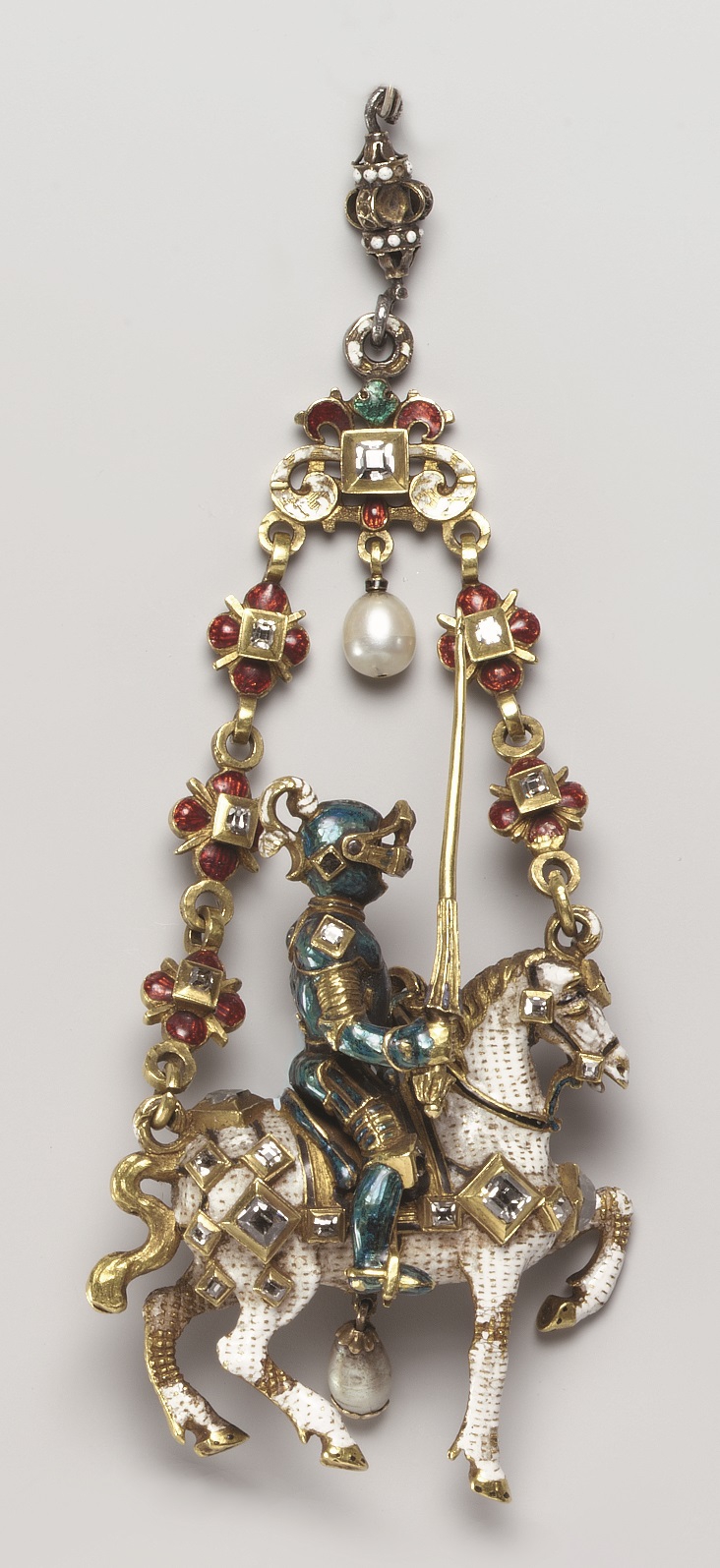 Print Page
Print Page
 Print Page
Print Page
Location: possibly Italy
Materials: gold, opaque and translucent enamel, diamonds and pearls
Dimensions: 10.5 x 4.5 cm
Accession Number: CON 764
Other Notes:
The taste of collectors such as William Beckford for exquisitely made works of art of diverse origin and period, a taste that also justified restoration or embellishment of these works, provided the craftsmanship was comparable, prepared the way for the next stage of historicism: the creation of fully fledged imitations. This development gained momentum as more collectors sought to own works that were in limited supply. During the 1820s the fashion for fancy dress balls, where historical costumes were required, also stimulated interest in medieval and Renaissance jewellery. The present pendant, purchased in Florence in 1829 by the Duke of Buckingham, is one of the earliest datable examples of this imitative genre. When it was sold some years later, at the Stowe sale in 1848, it was still believed to be authentic and was described as “a very beautiful specimen of cinquecento jewellery, made with great skill and taste”. As such, it is a harbinger of the ‘Renaissance’ jewels produced by Alfred André and others, many of which, like this pendant, entered the collections of various members of the Rothschild family.
Bibliography:
Haydn Williams, Enamels of the World: 1700-2000 The Khalili Collections, London 2009, cat. 241, p. 349.
